Wooden Buttons
Wood is one of those material, like shell, bone and ceramics, have been used for centuries (or longer) for utility fastenings. Wooden and bone moulds have formed the basis of covered buttons, from the most pedestrian to highly worked passementerie items, and even for uniform buttons covered with metal shells. In the 1840 Penny magazine Charles Dickens wrote:
“Button moulds are generally oak, beech, elder dyed black with nutgalls or similar dye. They are covered with threads of gold, silver, silk or other costly materials. Several women sat around a table, each having a large needle fixed in the table opposite the part where she was seated – also a bobbin or reel containing the thread which she was to use. The mould was held by the hole in center upon the needle; the end of golden or other thread was at the same time put thru the hole and fixed. The thread was wound over and around every part of the mould in a peculiar way, so as to present everywhere a surface of thread and also a determinate pattern, according to the fashion of the day. When finished the thread was secured and at the back of the button, folds of thread were taken up and tied together, so as to form a shank for fixing the button to the garment.”
Button moulds were shipped in to Australian colonies at the turn of the 19th century, if not before. Part of a shipment of goods from 1850 is listed below:
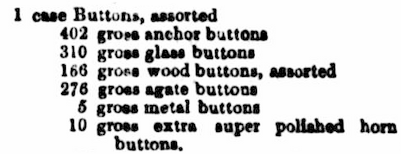
Sydney Morning Herald, 25th October 1850, page 4.
Wooden buttons were always in use, particularly on coats, even when not the latest fashion.

Weekly Times (Melbourne), 25th October 1884 page 6. An early, wooden set of realistic buttons!


The Australasian Sketcher with Pen and Pencil (Melbourne), 5th May 1886 page 71.
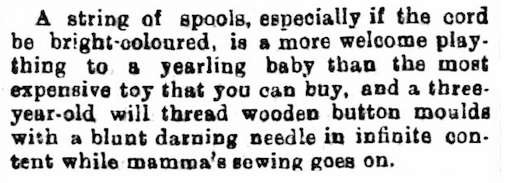
Weekly Times (Melbourne), 1st May 1886 page 6. From “Hints for Mothers”.
Wood has been turned, carved, polish, stained, and painted. Designs have been burnt (pyrography), pressed, inlayed (intarsia) and formed by marquetry. During the Art Deco period, layers of different colours were laminated and then sliced across; and wood was combined with metal in geometric forms. Wood has even been the base for composition buttons, where wood pulp was combined with fillers and binders then moulded. Of course, arts and crafts practitioners have used wood to make small quantities of buttons, both professionally and as a hobby.

Many articles appeared in print describing ways to decorate your own wooden buttons at home.
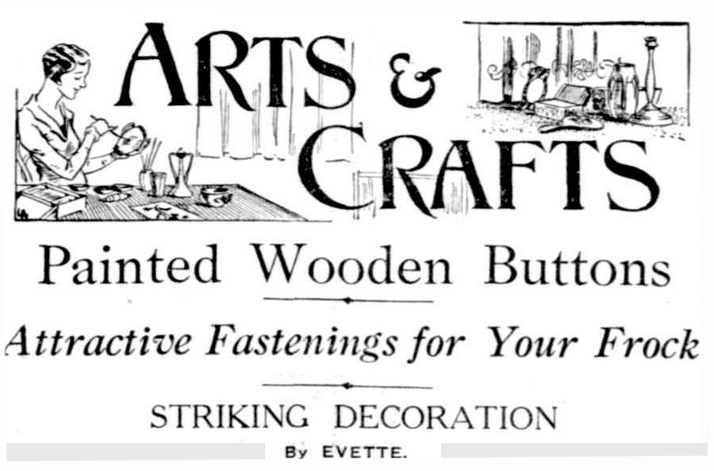
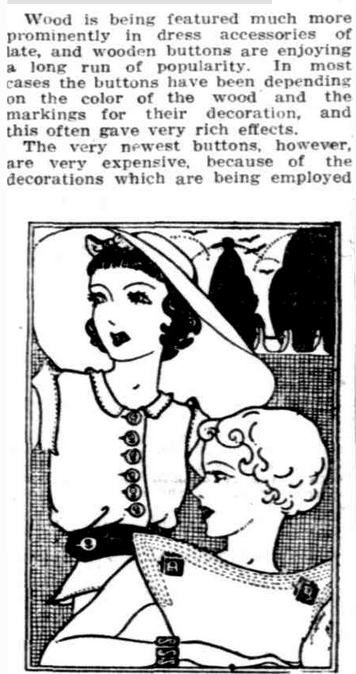
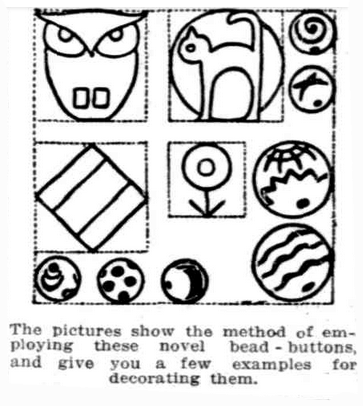

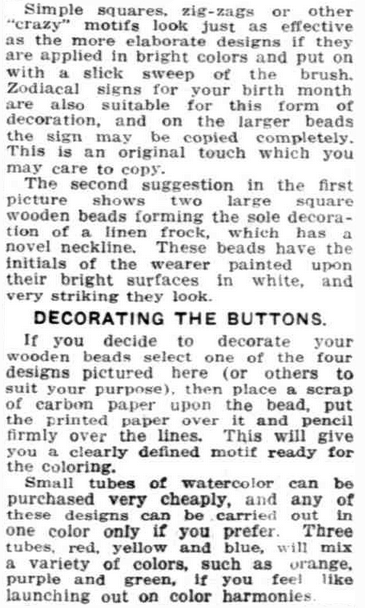
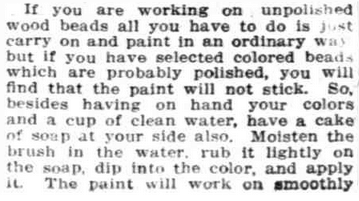
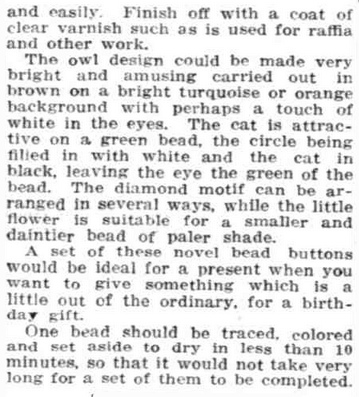
Sunday Times (Perth), 10th February 1935 page 3. T\
The effect of the Great Depression resulted in an increase in the use of wooden buttons, both as above, and also crafted from native woods and nuts.
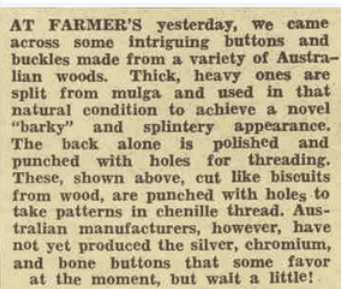
The Australian Women’s Weekly, 1st June 1935 page 22.
